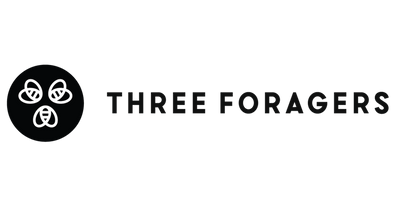The Magic of Beeswax
Here at Three Foragers we love all things beeswax. Beeswax is prized for its clean, fragrant honey scent and is collected in a sustainable, bee-friendly manner.
Where does beeswax come from?
-
Honeybees need to eat 8 pounds of honey to make 1 pound of beeswax.
-
Beeswax is secreted by bees through wax glands and is shaped into honeycombs where their young live and where honey is stored.
-
Since honeybees put so much effort into creating their golden wax, beeswax is not deliberately harvested from the hive, but instead, it is carefully collected as a byproduct during honey extraction (read more detail in our blog post). When honeybees store honey in the honeycomb frames, they cover the honey with a wax “cap”, like putting a lid on a jar. When we extract the honey, this top cap is scratched off so that the honey can be released from the honeycomb in our extraction machine. Even during this process, we try to minimize the amount of wax that we scratch off so that it can stay on the honeycomb to be returned to the bees. The actual amount of wax that is collected by us and other beekeepers is very small (3% or less!) compared to the amount of honey that we harvest.
-
Soy wax is often touted to be a sustainable candle option (compared to the standard paraffin) because it comes from soybean, which is a renewable, natural plant. However, now that the soy industry has grown massively around the world to meet global demand, soy production is tied with intensive farming practices in the US, China, and Russia, as well as deforestation in the Amazon and other tropical areas (source).
-
Soy and paraffin candles also require extensive chemical processing to produce the wax while beeswax is cleaned only using heat, water, and a fine filter.
-
Therefore, beeswax is much rarer and more sustainable than other waxes like soy, coconut, or paraffin!
What’s (not) in beeswax?
-
Beeswax gets its color and scent from the honey, pollen, and propolis that the bees store inside the beehive. Like honey, the composition of beeswax depends on the flowers and plants where the honeybees have foraged, so each batch is wonderfully unique!
-
Beeswax is free of toxins. Paraffin wax comes from crude oil and will emit chemicals while burning that are harmful to breathe in over long periods. Soy wax is very soft on its own and often has some paraffin blended in order to achieve a firm candle. If you ventilate your home and only burn a paraffin or soy candle for short periods, then the harmful effects will be minimized. If you love to enjoy burning candles for long periods of time, however, beeswax is a much cleaner option.
-
100% beeswax candles have no additives and emit the natural aroma of honey without any added scents.
How do beeswax candles perform compare to other wax types?
-
Beeswax is denser than other waxes, which helps it burn more slowly, and therefore your candle will last longer than other wax types.
-
The light from a beeswax flame is on the same spectrum as natural sunlight, while a soy candle flame is cooler and whiter.
-
Because of their pure, natural composition, beeswax candles don’t release soot while burning.
-
Beeswax candles are biodegradable, healthy, and relaxing for all your senses. Since we don’t need to add any fragrance or essential oil scents to enjoy the wax, individuals who may normally get headaches or are allergic to other types of candles will find beeswax candles to be much more soothing.
Final thoughts
When you burn a candle in your home you are directly impacting the quality of the air that you and your loved ones will be breathing. Beeswax candles are 100% naturally derived, are sourced with minimal environmental impact, require no chemical processing, and provide a pure, clean-burning experience. Finally, beeswax candles support beekeepers in their ongoing care and stewardship of honeybees!

